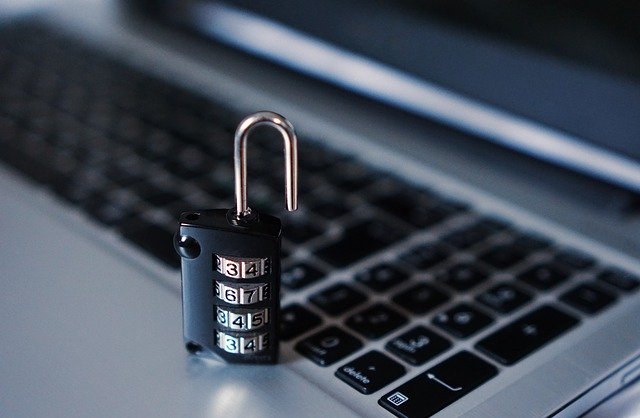Each day it seems that there’s a new cybersecurity threat to look out for. Hackers seem to be one step ahead of developers, and they are targeting companies big and small. The less IT management and data protection a company has, the more likely they are to become the target of a cyberattack. A cyberattack is no longer just a simple virus that slows down your computer, but now can put you out of business for good.
The best line of defense you have against cybersecurity threats is your staff. You may have invested in expense cybersecurity software, but it won’t protect you if a staff member falls victim to phishing. Educating your team by providing thorough cybersecurity training is more critical now than ever, and will help keep your business and its data safe.

Why Is Cybersecurity Training For Your Employees Necessary Now?
Almost 90% of cybersecurity breaches in business are due to human error and employee negligence. With such a high statistic, it seems only obvious that the solution is to prevent these errors from happening. Employees aren’t intentionally negligent, but it comes down to a lack of training and understanding. You can’t blame them, as cybersecurity risks are complex, but employees must understand these risks and be able to identify them. Not all your staff need to be experts in cybersecurity. Still, you should have someone on your team who has obtained a masters in cyber security online, who can both facilitate staff training and monitor security systems.
The reason that this training is so necessary these days is due to a couple of factors.
1. Remote work
Around 5 million American employees work from home at least 50% of the time. This means that businesses are exchanging vast amounts of data via the cloud and mobile technologies. Any data stored in the cloud is potentially at risk, and therefore requires the implementation of high-level security features. On top of that, those who work remotely often use personal devices to exchange information, including smartphones and laptops. Businesses do not have the same level of control over personal devices, and therefore it’s essential that employees understand security liabilities and how to keep information safe.
Providing employees with corporate devices for work purposes, which come with security features already installed can help mitigate some risks, although as employees are working from home, there are still additional precautions that they will need to take, and thorough training is necessary.
2. The Internet of Things
The IoT is still a relatively new concept, though it will continue to grow until all businesses utilize it for its efficiency and effectiveness. The IoT allows employees to use their devices to connect to your company network. While it is very efficient and enables employees to bring their own devices, it also poses a considerable threat.
Cybersecurity, when related to the IoT, is exceptionally vulnerable. You have to rely on employees’ devices being thoroughly protected, or risk a hacker gaining access to your entire company network through an unprotected device. It doesn’t just mean you’re vulnerable to mobile malware. A hacker can enter an employee’s device via an email phishing scam, and then into your network.

The Cybersecurity Threats That Staff Will Face
While there’s an endless list of cybersecurity threats, here are some of the ones that your employees are most likely to encounter. You can use this list to properly train your staff on these cybersecurity risks and how to prevent them:
1. Phishing
Phishing, also called social-engineering attacks, is the most common cybersecurity threat that your employees will face. The good news is, it’s also the most straightforward attack to avoid with proper training. 62% of phishing attempts result in some form of user credentials being exposed. That means that many employees are falling victim to this form of cyberattack.
Phishing scams target your employees via email and aim to get them to click embedded links, or download a file, both of which are malicious. When your employee clicks the link, they open the door for the cybercriminal to access your network and all your sensitive data. Cybercriminals are increasingly good at disguising themselves in these emails, making them appear safe and legitimate.
On top of the phishing links and downloads, these emails can also contain direct requests for sensitive information. They will appear to come from a colleague, boss, client, or a familiar third party, and often convince employees to send data through to them.
2. Employee Errors
While not a targeted threat from a cybercriminal, employee errors can be just as dangerous. When employees make a critical error, it may lead to a leak of sensitive information or a data breach. By providing thorough training, you can help employees understand the importance of utmost care when facing the following situations:
– Accidental disclosure of information: 88% of people have received an email containing sensitive information that was not intended for them. Employees may send emails or faxes to the wrong person, or send files they didn’t mean to.
– Data deletion: Employees may accidentally erase essential files and could even delete entire databases. If you haven’t been backing up your data frequently, this could be a substantial problem.
– Disposing of documents improperly: Paper documents can often fall into the wrong hands due to improper disposal. If documents contain sensitive client or business information, employees must destroy them properly before disposing of them.
3. Fileless attacks
Fileless attacks are one of the hardest to recognize, and are therefore extremely dangerous. They do not use malicious links or downloadable files to infiltrate your system. They will instead use access points in programs, software, and applications that your employees use daily. If you are using old software or are behind on your patches and updates, cybercriminals can easily find a way in. These attacks are hard to prevent, and the best precaution you can take is encourage employees to install any new software updates each day and keep anti-virus software up to date.

Conclusion
Beyond just training your staff on the potential cybersecurity threats they may face, you also need to implement processes to reduce risks. Make sure all sensitive data is password protected, with multi-step authentication processes needed in order to access it. Implement access-only files and applications to help prevent unintended deletions and to stop fileless attacks getting into your databases. Lastly, make sure you’re strategic with the software you choose to use, and that it has end-to-end encryption.
